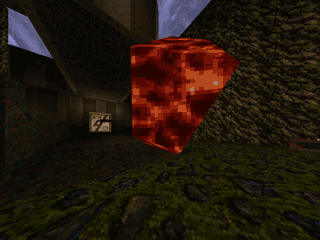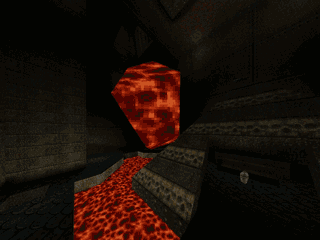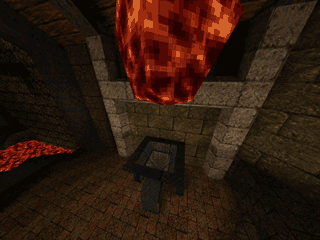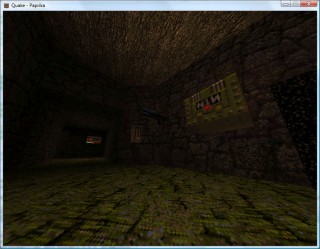Goodness Gracious, Great Balls of Lava
Wednesday, 12th September 2007
I've reworked the VM completely to use an array of a union of a float and an int, rather than the MemoryStream kludge I was using before. This also removes a lot of the multiply-or-divide-by-four mess I had with converting indices to positions within the memory stream.
There are (as far as I know) three ways to invoke QuakeC methods. The first is when an entity is spawned, and this is only valid when the level is being loaded (the function that matches the entity's classname is called). The second is when an entity is touched (its touch function is called) and the third is when its internal timer, nextthink, fires (its think function is called).
The third is the easiest one to start with. On a monster-free level, there are still "thinking" items - every powerup item has droptofloor() scheduled to run.
A strange feature of custom levels has been that all of the power-up items have been floating in mid-air.
By hacking together some crude collision detection (face bouncing boxes and axial planes only) I could make those objects sit in the right place:
With many thanks to Zipster pointing me in the right direction I have extended this to perform collision detection of a moving vertex against all world faces.

Here I fire a vertex (with a lava ball drawn around it to show where it is) through the world. When I hit a face I reflect the velocity by the face normal.
It looks much more realistic if I decrease the velocity z component over time (to simulate gravity) and reduce the magnitude of the velocity each time it hits a surface, so I can now bounce objects around the world:




Performing the collision detection against every single face in the world is not very efficient (though on modern hardware I'm still in the high nineties). There are other problems to look into - such as collisions with invisible brushes used for triggers and collision rules when it comes to water and the sky, not to mention that I should really be performing bounding-box collision detection, not just single moving points. Points also need to slide off surfices, not just stop dead in their tracks.
Once a vertex hits a plane and has been reflected I push it out of the surface very slightly to stop it from getting trapped inside the plane. This has the side effect of lifting the vertex a little above the floor, which it then drops back against, making it slide down sloping floors.

